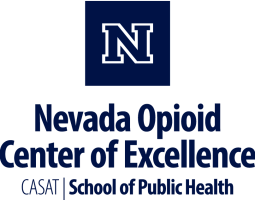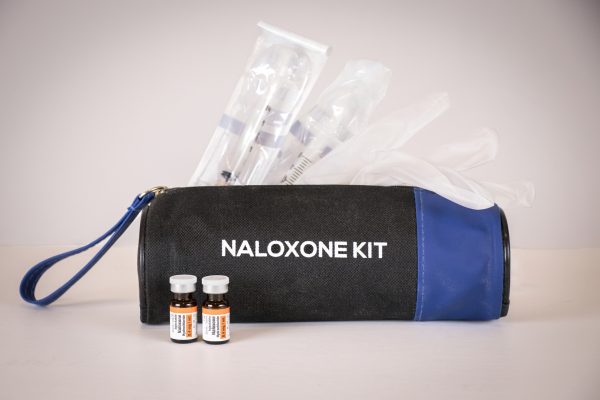
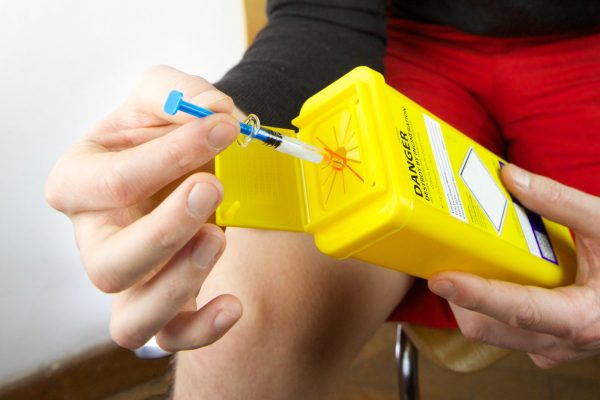
Providing individuals with life-saving tools and connecting them to essential resources is a key approach to improving health outcomes. A person-centered strategy prioritizes meeting individuals where they are, equipping them with the necessary support to enhance their overall well-being. These efforts focus on preventing overdose, supporting recovery, and ensuring access to critical health services, including substance use and mental health care (SAMHSA).
Safety and prevention initiatives in Nevada include (but are not limited to):
- Access to Medications for Opioid Use Disorder
- Emergency Overdose Reversal Medications
- Drug Testing Resources (e.g., Fentanyl & Xylazine Test Strips)
- Secure Disposal Options for Syringes and Medications
- Crisis Intervention Resources (e.g., 988 Suicide & Crisis Lifeline)
This approach ensures individuals receive nonjudgmental, evidence-based support while fostering pathways to treatment, long-term recovery, and overall health and well-being.
Health & Safety Resources
Websites
Nevada Fentanyl Test Strip Finder
A list and map of Fentanyl Test Strip Distribution Sites in Nevada.
Nevada Overdose Reversal Medication Finder
Find naloxone and overdose reversal medications in Nevada.
National Harm Reduction Coalition
The National Harm Reduction Coalition builds evidence-based strategies with and for people who use drugs.
National Harm Reduction Technical Assistance Center (NHRTAC)
The National Harm Reduction Technical Assistance Center (NHRTAC) provides free help to anyone in the country providing (or planning to provide) harm reduction services to their community. This may include syringe services programs, health departments, programs providing treatment for substance use disorder, as well as prevention and recovery programs.
Tools & Resources
How to Become an Overdose Reversal Medication Distribution Site in Nevada
Request to become an Overdose Reversal Medication Distribution site.
How to Use Fentanyl Test Strips
Infographics and step-by-step instructions.
Las Vegas Harm Reduction Center
Trac-B seeks to improve the quality of life of those affected by substance use disorders including our clients, their loved ones, and their communities. Trac-B Exchange provides harm reduction services and supplies to people engaged in the sex trade and people who are injecting or misusing drugs or other substances and are at risk for violence and communicable diseases including Hepatitis C and HIV.
Native Harm Reduction Toolkit
This toolkit is a culturally responsive resource designed to help Native communities implement harm reduction strategies, decolonize public health approaches, reduce stigma, and engage Tribal leaders in supporting life-saving interventions.
Never Use Alone
Toll-free national overdose prevention, detection, life-saving crisis response and medical intervention services for people who use drugs while alone. Never Use Alone’s peer operators are available 24-hours a day, 7 days a week, 365 days a year.
Overdose Reversal Medication for Community Organizations
This guide includes Naloxone Distribution in Nevada guidelines and best practices for community based organizations.
START to be safe
"START to be safe" is a tool that helps clients and providers explore strategies for reducing risks related to substance use and associated health and safety concerns.
Posters & Infographics
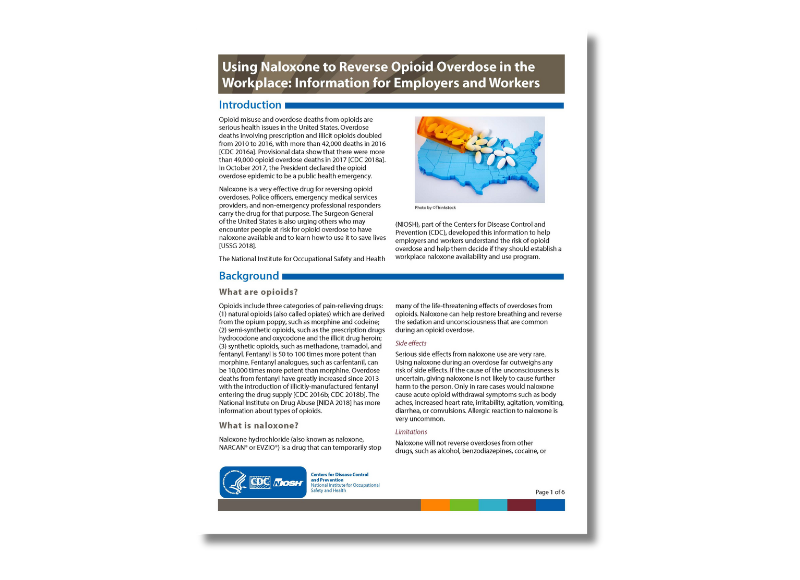
Using Naloxone to Reverse Opioid Overdose in the Workplace: Information for Employers and Workers
This fact sheet helps employers understand the risk of opioid overdose and allows them to decide if they should establish a workplace naloxone availability and use program.
View Resource
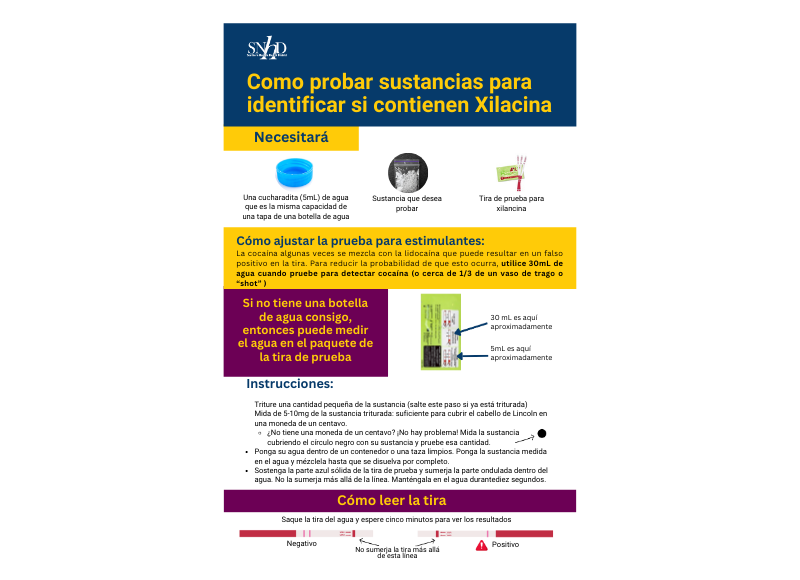
Como probar sustancias paraidentificar si contienen Xilacina
Este recurso proporciona instrucciones sobre cómo analizar sustancias para detectar xilazina utilizando una tira reactiva, incluyendo instrucciones paso a paso para la prueba, consejos para la reducción de daños y recursos adicionales.
Download Resource

How to Test Substances for Fentanyl
This resource provides instructions on how to use fentanyl test strips to test substances for fentanyl, including instructions on proper measurement, dilution, and reading the results.
Download Resource
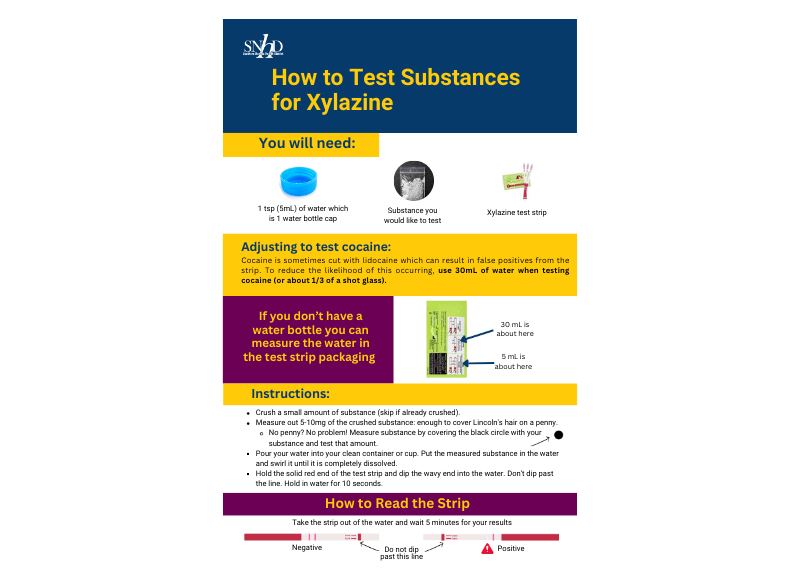
How to Test Substances for Xylazine
This resource provides instructions on how to test substances for xylazine using a test strip including step-by-step testing instructions, tips for harm reduction, and additional resources.
Download Resource

Harm Reduction Social Media Toolkit
The Harm Reduction Social Media Toolkit is designed to help share knowledge about the dangers of opioid use, learn how to prevent opioid overdose/poisoning, and provide education on harm reduction.
Get the Toolkit
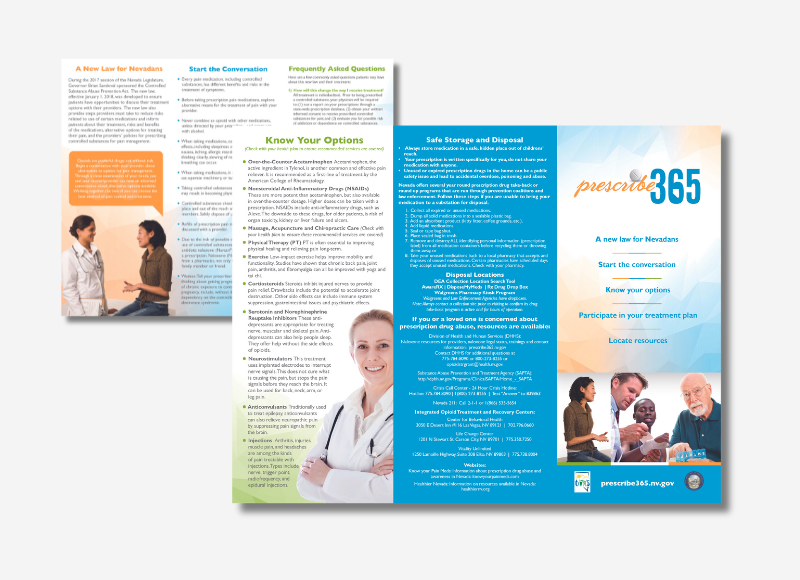
Prescribe 365 Brochure
This brochure is for providers to print and display in their offices encouraging patients to openly discuss safe use of opioids.
Download Brochure
Publications
Evidence-Based Strategies for Preventing Opioid Overdose: What’s Working in the United States
There are strategies that can assist community leaders, local and regional organizers, non-profit groups, law enforcement, public health, and members of the public in understanding and navigating effective ways to prevent opioid overdose in their communities. Use this information as a reference for evidence-based practices that have been successfully implemented in the U.S.
Overdose Prevention and Response Toolkit
This toolkit provides guidance to a wide range of individuals on preventing and responding to an overdose. The toolkit also emphasizes that harm reduction and access to treatment are essential aspects of overdose prevention.
Overdose Reversal Medication for Professionals
A Nevada provider's guide to prescribing Naloxone to patients who use opioids.
SAMHSA Harm Reduction Framework
The SAMHSA Harm Reduction Framework is the first document to comprehensively outline harm reduction and its role within the Department of Health and Human Services (HHS). The Framework will inform SAMHSA’s harm reduction activities moving forward, as well as related policies, programs, and practices.
Spirit of Harm Reduction: A Toolkit for Communities of Faith Facing Overdose
A toolkit addressing faith and faith leadership in engaging with people who use drugs and harm reduction practices.
Wound Care & Medical Triage for People Who Use Drugs and the Programs That Serve Them
This comprehensive guide provides information and recommendations regarding general health, safer use practices, common viral, fungal, parasitic, and other injection-related infections, overdose and overamp, tapering, withdrawal, medications for opioid use disorder, and seeking medical care.
Xylazine Basics: Overdose Prevention, Harm Reduction, and Wound Care
This document provides information on xylazine, a non-opioid veterinary tranquilizer used as an additive in illicit drug supplies, notably in combination with heroin and fentanyl. It discusses the effects of xylazine use, including sedation and potential risks such as hypotension and bradycardia. The document also emphasizes harm reduction interventions for individuals who may encounter xylazine in the drug supply, including the use of naloxone for responding to overdoses and the importance of wound identification and treatment.
Webinars & Online Learning
Current News & Research
The NaloxBox Program in Rhode Island: A Model for Community-Access Naloxone
The NaloxBox initiative is an innovative, community-access naloxone program that provides tools, training, and awareness to empower laypeople to rescue victims of opioid overdose.
Good Samaritan Fatal Overdose Prevention and Drug-induced Homicide: Summary of State Laws
Research indicates that there is often a reluctance among those witnessing an overdose to summon emergency assistance from law enforcement or other first responders out of fear of arrest for drug possession or other charges. In an effort to reduce this fear and to encourage overdose witnesses to seek help, state policymakers developed Good Samaritan laws specific to drug overdoses. The purpose of these laws is to prioritize the overdose victim’s safety over arresting drug users by granting limited protection from criminal liability to persons seeking medical assistance and, in most cases, to the overdose victim. This document (1) provides a singular resource for each jurisdiction’s laws; (2) allows for a comparison of these laws between jurisdictions; and (3) identifies and highlights interesting provisions.
Harm Reduction: Findings from the Field
Alexander, C. (2024, May 07). Harm Reduction: Findings from the Field. [Blog post]. Substance Abuse and Mental Health Services Administration (SAMHSA) Blog. https://www.samhsa.gov/blog/harm-reduction-findings-field
